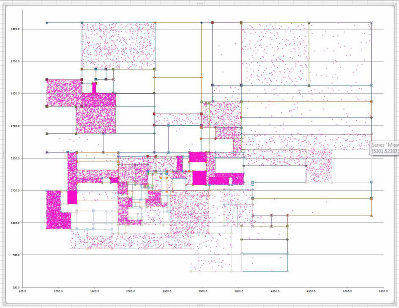In response to the events at Fukushima Daiichi, the U.S. Nuclear Regulatory Commission (NRC) issued an interim staff guidance document (JLD-ISG-2012-01) that places increasing emphasis on analysis of external events including high winds. Additionally, the U.S. NRC issued Regulatory Issue Summary (RIS) 2015-06, “Tornado Missile Protection,” that addresses conformance to a plant’s current site-specific licensing basis for tornado-generated missiles and notes its acceptance of License Amendment Requests using probabilistic risk assessment (PRA) methodologies and computer tools to simulate tornado-generated missiles.
The United States has more tornado activity than any other part of the world and is also susceptible to hurricanes, tropical storms and thunderstorms. A critical part of any high winds analysis is understanding the risk from windborne missiles.
In response, Westinghouse has developed a proprietary software tool called the Tornado Missile Strike Calculator (TMSC) to estimate the probability of windborne missile impact on plant structures, systems and components (SSCs). The TMSC also can estimate the number and type of missile strikes and the magnitude of the atmospheric pressure change to which an SSC is exposed. In contrast to other available missile strike tools, the TMSC provides improved transparency, versatility, ease-of-use and value while providing comparable results.
In addition to its tornado capabilities, the TMSC also can analyze the probability of missile strike in straight-line-wind events (i.e., hurricanes or cyclones). This capability is an important feature as many sites are vulnerable to these wind events in addition to tornadoes.
Industry assessments show that missile risk comes mostly from low-intensity, high-frequency wind events that result in loss of off-site power, and that damage from missiles poses a relatively small threat. Therefore, it is advantageous to use a simple, cost-effective missile treatment such as the TMSC tool, and focus the analysis on the plant response model and hazard analysis.
Some of the benefits of using the TMSC tool are the following:

Plan view showing distribution of potential missiles throughout site; some areas have higher missile density than others
Westinghouse used the TMSC tool to develop missile strike probabilities for a high winds PRA for an operating nuclear power plant. An industry peer review of the high winds PRA in accordance with U.S. NRC Regulatory Guide 1.200 and the ASME/ANS PRA standard determined that the TMSC is a reasonable method for assessing tornado missile risk.
Westinghouse also has experience in applying the TMSC to high winds analyses for various other applications and to Significance Determination Process responses.

Plan view showing structures (multi-colored boxes) and possible paths of tornadoes (red lines); the TMSC models the direction of travel of tornadoes and their path width